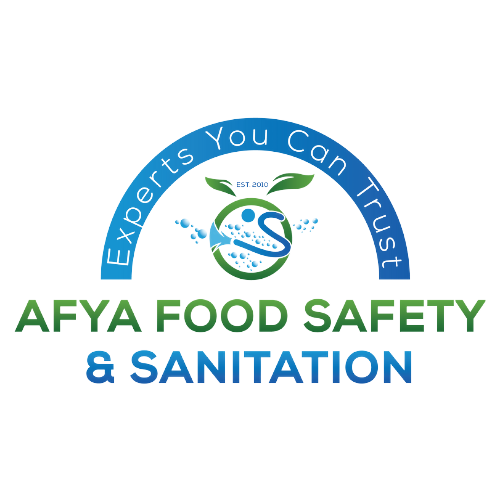
Please Wait For Loading

Please Wait For Loading
Maryland, MD USA
+1 (443) 666-9132
info@afyafoodsafety.com
Opening Hours: 9:00 AM - 5:00 PM
Copyright ©Afya Food Safety all rights reserved.
You can also reach us via Phone: +1 443 666 9132 or via Email:info@afyafoodsafety.com
Cleaning vs Sanitizing : Understanding the Difference in Food Facilities
Cleaning and sanitizing are the two essential ideas involved in guaranteeing the food’s safety and quality in every setting, whether in a restaurant or a food processing facility. Even though these terms are frequently used synonymously, they are different procedures with different goals. Maintaining food safety and hygiene in food facilities requires an understanding of the distinctions between cleaning and sanitation. Let’s examine how cleaning and sanitizing procedures differ and how they contribute to preserving facility hygiene.
Cleaning: The Foundation of Food Safety
Cleaning is the initial step in maintaining a safe and sanitary food environment. It involves the removal of visible dirt, debris, and contaminants from surfaces, utensils, equipment, and workspaces. This process is crucial because it prepares the area for the subsequent sanitation step.
Why Cleaning Matters
Proper cleaning serves several vital functions. These functions are:
The Cleaning Process
Effective cleaning involves the following steps:
Sanitation: The Final Barrier Against Harmful Microorganisms
After cleaning, the sanitation process takes over. Sanitation is the act of reducing or eliminating harmful microorganisms, including bacteria, viruses, and parasites, to levels that are safe for consumers. This process is a critical step in preventing foodborne illnesses.
Why sanitation matters
Sanitation is crucial for the following reasons:
The Sanitation Process
Just like cleaning, effective sanitation includes several steps. These are:
Monitoring and Verification
Regular monitoring and verification are essential for effective cleaning and sanitation processes. This includes using test strips to check sanitizer concentrations and swabbing surfaces for microbiological analysis. Keep accurate records of these activities, demonstrating compliance with regulatory requirements.
Conclusion
Cleaning and sanitation in food facilities are not options but necessities. While cleaning is the essential first step to removing visible contaminants, sanitation is the critical process that reduces or eliminates harmful microorganisms, ensuring food safety and protecting consumers. By understanding the difference between these two processes and implementing them effectively, food establishments can maintain a high standard of hygiene, comply with regulations, and build trust with their customers. In the food industry, safety and quality go hand in hand with cleaning and sanitation.
Related Posts
Categories
Antibiotic Resistance: A Growing Threat to Food Safety
April 17, 2025Understanding Cross-Contamination: A Major Food Safety Risk
March 31, 2025Calender